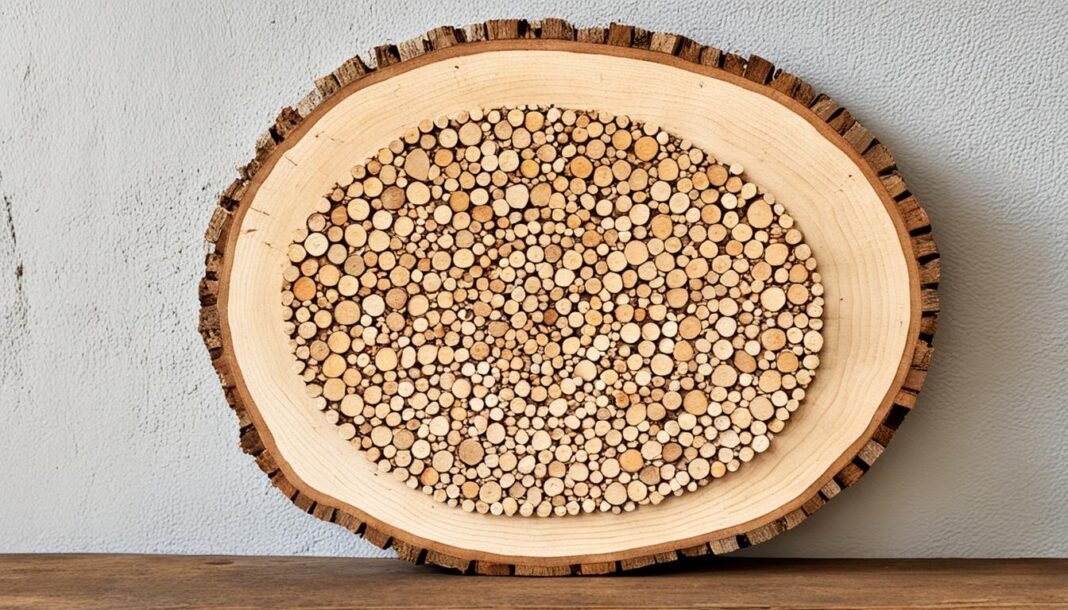Tiny dust particles surround us daily, often unnoticed. These specks have caught the New York Times‘ eye, sparking interest in microdust. From furniture debris to allergens, these pollutants play a crucial role in our lives.
Dust impacts our health, environment, and culture. It has influenced art, science, and popular media. Let’s explore the hidden world of dust and its surprising significance.
Key Takeaways
- Dust particles are ubiquitous in our environment, influencing our daily lives in both visible and invisible ways.
- The microscopic world of dust has captured the attention of the New York Times, sparking a deeper fascination with these tiny particles.
- Dust can have significant impacts on indoor air quality, triggering allergies and respiratory issues for some individuals.
- Dust particles can serve as valuable sources of information, acting as storytellers of historical and cultural significance.
- The art of dust collection has emerged as a unique form of creative expression, highlighting the visual and conceptual appeal of these microscopic marvels.
Exploring the Unseen World of Dust
Dust shapes our environment in ways we often overlook. These tiny particles reveal the hidden intricacies of our world. From dancing sunbeams to surface grime, dust is our constant, microscopic companion.
The Ubiquity of Dust in Our Environment
Dust particles fill every nook and cranny of our surroundings. Particulate matter floats in the air, while contaminants gather on our furniture.
Dust’s debris and pollutants can be found in surprising places. They exist from the highest mountain peaks to the deepest ocean trenches.
The Microbiome of Dust Particles
Microdust particles harbor a complex ecosystem of microorganisms. Bacteria and fungi thrive in the grime that settles on surfaces.
This diverse array of microscopic life creates a fascinating microbiome. These tiny inhabitants play a crucial role in our environment’s delicate balance.
| Type of Dust Particle | Composition | Potential Impact |
|---|---|---|
| Particulate Matter | Mixture of solid and liquid particles suspended in the air | Can contribute to respiratory issues and poor air quality |
| Contaminants | Harmful pollutants and debris that can accumulate on surfaces | May pose health risks and negatively impact indoor air quality |
| Microdust | Microscopic particles that harbor diverse microbiomes | Can influence the delicate balance of ecosystems and contribute to the spread of grime |
“Dust is the shadow of civilization, the detritus of human activity.” – Proverbs and Other Ancient Wisdoms
The unseen world of dust is full of complexity and intrigue. It challenges us to rethink our relationship with this ever-present substance.
Unveiling the Secrets of small speck of dust nyt
The New York Times explores the fascinating world of small speck of dust nyt and particles. Their coverage reveals hidden secrets of contaminants, debris, pollutants, grime, and microdust. These often-overlooked elements surround us daily.
The NYT uses cutting-edge imaging to show readers microscopic particles. This allows us to see the hidden world of dust. Their visuals help us understand the importance of these tiny marvels.
“These small speck of dust nyt are not just passive components of our environment; they hold the power to reveal secrets about the air we breathe, the spaces we inhabit, and the stories they carry.”
The New York Times explores the microbiome of dust particles. They uncover diverse microorganisms living in these tiny spaces. This research shows how dust interacts with the living world around us.
The New York Times uses stunning visuals to reveal secrets of small speck of dust nyt. Their stories inspire a new appreciation for our environment. Readers discover the marvels hidden in the dust around us.
The Impact of Dust on Indoor Air Quality
Dust particles affect indoor air quality significantly. They contain various contaminants, allergens, and irritants. These particles can enter our homes, schools, and workplaces, potentially harming our health.
Allergies and Respiratory Issues
Indoor dust can trigger or worsen allergies and breathing problems. Dust mites and pet dander can cause sneezing, itchy eyes, and nasal congestion.
Particulate matter can irritate the lungs, worsening conditions like asthma and COPD. Fine dust particles can reach deep into the lungs, causing inflammation.
- Dust mites are common allergens in homes. They thrive in warm, humid areas.
- Pet dander includes skin flakes, hair, and saliva. It’s a major irritant for people with pet allergies.
- Fine particles in dust can cause respiratory distress and inflammation.
Tackling dust’s impact on indoor air is vital for health. It’s especially important for those with breathing issues or allergies.

Dust Particles as Storytellers
Dust particles have a remarkable ability to chronicle the past. These tiny debris and microdust are silent witnesses. They preserve echoes of human history and cultural traditions.
Historical and Cultural Significance
Dust particles provide valuable insights into our shared past. Researchers study dust composition and layers to uncover clues. These clues reveal past civilizations, customs, and environmental conditions.
Dust samples from ancient sites reveal information about long-gone societies. They show materials, tools, and technologies used. Dust from historical buildings offers glimpses into past cultural practices.
Atmospheric dust carries traces of volcanic eruptions and industrial activities. It acts as a natural record of our planet’s history.
- Dust samples from ancient archaeological sites can reveal information about the materials, tools, and technologies used by long-gone societies.
- Dust collected from historical buildings or artifacts can offer a glimpse into the cultural practices and lifestyles of previous generations.
- Atmospheric dust can carry traces of volcanic eruptions, industrial activities, and other environmental events, acting as a natural record of our planet’s history.
Dust particles hold cultural and symbolic meaning in various traditions. Some belief systems revere dust as a symbol. It represents impermanence, humility, or the cycle of life and death.
“Dust thou art, and unto dust shalt thou return.” – Genesis 3:19
The hidden stories within dust particles offer a deeper appreciation. They connect us to our shared human experience. These tiny specks link the present to the past in unexpected ways.
The Art of Dust Collection
Dust collection has become an intricate art form in the world of microscopic marvels. Researchers study tiny particles, contaminants, debris, and pollutants that surround us. From grime to microdust, these elements hold valuable information.
Innovative techniques have emerged to understand the microscopic world of dust. Dust collectors use specialized equipment to capture elusive particles for analysis. Microscopic imaging, chemical analysis, and data processing tools are crucial in this endeavor.
This field attracts researchers from various backgrounds, each bringing unique perspectives. They explore dust’s historical significance and its impact on air quality and health. Their work builds a comprehensive understanding of this overlooked contaminant.
“Dust is the shadow of civilization, the residue of human activity. By studying it, we can uncover the stories hidden in the most minute of particles.”
The art of dust collection continues to evolve, offering new insights. It helps trace debris origins and identify harmful pollutants. These microscopic marvels reveal hidden complexities in our environment.
| Dust Collection Techniques | Advantages | Applications |
|---|---|---|
| Vacuum Filtration | Efficient capture of particles, contaminants, and debris | Indoor air quality assessment, forensic analysis |
| Electrostatic Precipitation | Effective collection of microdust and pollutants | Environmental monitoring, industrial process control |
| Impaction Sampling | Precise separation and isolation of particles | Particle size distribution analysis, material science research |
Dust and the Forensic Sciences
Dust particles are vital in forensic sciences, especially in trace evidence analysis. These tiny contaminants and debris offer key insights into criminal investigations. They reveal hidden clues in the microscopic world.
Trace Evidence Analysis
Forensic experts value grime and microdust as trace evidence. By examining pollutants at crime scenes, investigators uncover crucial information. These dust samples can reveal locations, movements, and identities of those involved.
Forensic scientists use advanced techniques to analyze dust samples. They can identify chemical composition, origin, and history. This data links suspects to locations and helps reconstruct events.
| Dust Particle Analysis | Potential Insights |
|---|---|
| Elemental composition | Identify the source or origin of the dust |
| Microscopic features | Determine the specific type of dust or debris |
| Trace organic compounds | Uncover hidden clues about the environment or activities |
Dust analysis has transformed forensics, revealing complex narratives in tiny particles. It helps investigators piece together puzzling cases. The power of microscopic contaminants continues to solve mysteries in the unseen world.
“Dust particles can reveal a wealth of information, from the location of a crime to the identity of those involved. They are the silent witnesses that forensic scientists rely on to uncover the truth.”
Dust in Space: Cosmic Connections
In space, dust particles play a vital role. These tiny particles, called contaminants or debris, shape our understanding of the universe. They offer insights into cosmic workings.
Microdust marvels reveal secrets about celestial bodies. They help us understand star systems and universe origins. These particles act as cosmic detectives.
Dust particles are cosmic tracers. They help scientists uncover our solar system’s history. Researchers study their distribution to learn about our galactic home.
Dust particles are vital in the cosmos. They shape distant worlds and govern star lifecycles. Microdust is key in forming planets and recycling galactic materials.
“Dust particles in space hold the secrets of the universe, waiting to be unraveled by the curious minds of scientists.”
Studying space dust remains crucial. It helps us understand the universe’s origins and evolution. This research will continue to unlock cosmic mysteries.
Cleaning Techniques for Dust Removal
Keeping your space dust-free is tough. But with the right methods, you can manage particles, contaminants, and debris well. Let’s look at green ways to remove dust and create a healthier home.
Eco-Friendly and Sustainable Approaches
We’re moving away from harsh chemicals for cleaning. Natural options are gaining popularity. Microfiber cloths catch pollutants and grime without detergents.
HEPA-filtered vacuums trap even tiny microdust particles. These eco-friendly dust removal choices are growing.
- Invest in high-quality microfiber cleaning cloths that effectively lift and trap dust without the use of chemicals.
- Utilize baking soda, vinegar, and essential oils for natural, non-toxic cleaning solutions that effectively remove debris and pollutants.
- Upgrade to a HEPA-filtered vacuum cleaner, which can capture up to 99.97% of airborne particles as small as 0.3 microns.
- Incorporate plants into your living space, as they can help purify the air and trap airborne dust and contaminants.
| Cleaning Method | Effectiveness | Eco-Friendliness |
|---|---|---|
| Microfiber Cloths | High | High |
| Natural Cleaning Solutions | Medium | High |
| HEPA-Filtered Vacuums | High | Medium |
| Air-Purifying Plants | Medium | High |
Use these green cleaning methods to reduce your impact on the planet. You’ll keep your home clean and healthy. Say goodbye to particles, contaminants, and debris that harm indoor air quality.
Dust in Literature and Popular Culture
Dust, often overlooked, captivates in literature and popular culture. These tiny particles become symbols and metaphors in artistic expressions. They transform into driving forces for storytelling and imagery.
In classic novels, dust clings to characters symbolically. Cinematic masterpieces show microdust swirling beautifully through the air. These depictions have woven dust into our collective consciousness.
“Dust thou art, and unto dust shalt thou return.” – Genesis 3:19
This biblical quote highlights dust’s connection to our existence. It shows the cyclical nature of life and death. Authors and poets explore dust’s metaphorical depths in their works.
Dust represents life’s fragility and the fleeting nature of human efforts. It also symbolizes how all things are connected. Writers use it to convey deep themes about existence.
- In Ray Bradbury’s “The Martian Chronicles,” dust storms on Mars symbolize civilization’s impermanence.
- Cormac McCarthy’s “The Road” shows a world where debris is all that remains.
- In “Citizen Kane,” dust on old treasures represents fading memories and wealth’s transience.
Dust fascinates creators across literature and popular culture. It’s a powerful symbol of human experience and nature’s fragility. Dust also reminds us of our own mortality.

Conclusion
Dust particles are more than just contaminants or allergens. They’re intricate storytellers, revealing insights into our history, culture, and environment. These tiny specks hold profound significance in our daily lives.
Dust influences our indoor air quality and impacts our health. It even unlocks secrets in forensics. These particles connect us to the cosmos and inspire art and literature.
Studying dust deepens our understanding of the microscopic world around us. It helps us appreciate the delicate balance that sustains our living spaces and well-being. Moving forward, we must develop eco-friendly approaches to dust management.
We need to coexist with these tiny particles without compromising our indoor environments. Our goal is to protect the health of our communities while respecting the role of dust in our world.


